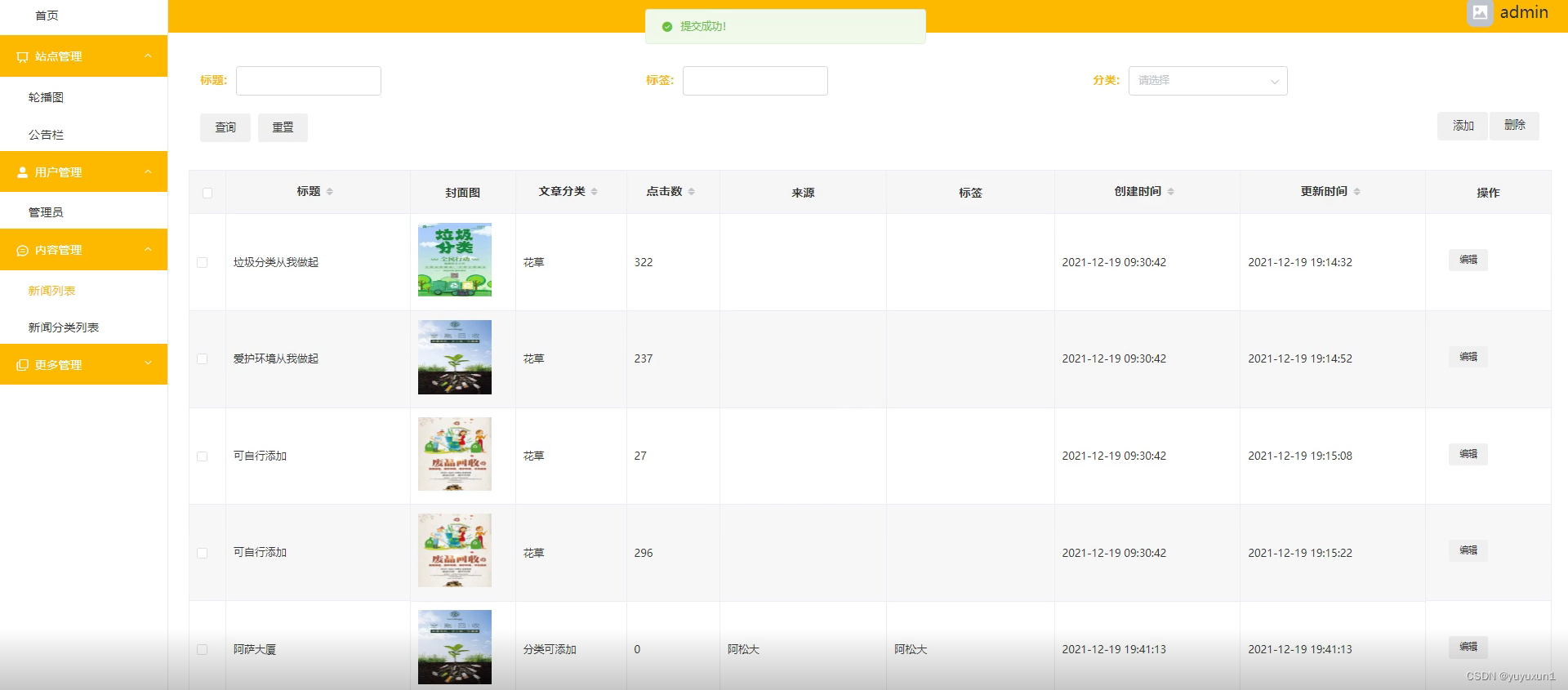字符串操作
# 切分字符串
language = "Python and Java and C++ and Golang and Scala"
# split 切割字符串 生成一个列表: 暂时理解为一个容器 有序序列
result1 = language.split("and")
print(result1)# 连接序列 生成字符串 跟split 是相反的操作
lang =["English", "Chinese", "Jananese"]
# 通过 - 连接上面的语言
result2 = "-".join(lang)
print(result2, type(result2))# 3, 删除字符串两边的空格 strip
class_name = " Big Data "
print(len(class_name))
class_name_new = class_name.strip()
print(class_name_new, len(class_name_new))# 4, 判断一个字符串是否以指定子串开始
mystr ="hello world"
print(mystr.startswith("hello"))
# 不是以world开头 则返回false
print(mystr.startswith("world"))
# 以world结束 返回 True
print(mystr.endswith("world"))
# 判断在指定范围内是否以hello开始
print(mystr.startswith("hello", 3, 8))
print(mystr.startswith("lo", 3, 8))

列表操作
# 列表 [], 然后里面可以是任何类型的数据 12, 23.6, "" ,[]# 列表本质上是一个序列0 1 2 3 4 name_list = ["james", "蔡徐坤", "罗志祥", "格林", 2022,199] print(name_list, type(name_list), len(name_list)) # 1,列表索引查找 print(name_list[0])输出james print(name_list[1])输出蔡徐坤 print(name_list[3])输出罗志祥 print(name_list[2])输出格林 print(name_list[4])输出2022 print(name_list[5])输出199# 使用index查找指定的数据 返回指定数据在列表 中的位置 print(name_list.index("格林"))输出3 # 在指定的列表范围内 查找格林 没有找到 则报错 # print(name_list.index("格林", 0, 2))输入 2 1 0 # 2, 统计一个元素在 列表中的个数 count name_list2 = ["蒋卢", "吴苹雨", "李龙波", "蒋卢"] result1 = name_list2.count("蒋卢") result2 = name_list2.count("李龙波") result3 = name_list2.count("挠朋朋") print(result1, result2, result3)# 3, 计算列表长度 print(len(name_list)) 输出6 print(len(name_list2)) 输出4# 4, 判断指定元素是否存在 name_list3 = ["廖警官", "涛涛", "卢涛", "高宇"] print("涛涛" in name_list3)输入True print("杨主峰" in name_list3)输入False print("胡志豪" not in name_list3)输入True print("卢涛" not in name_list3)输入False# 5,增加一个元素到列表 name_list3.append("杨主峰") print(name_list3)# 追加一个序列 将一个列表整体加入到列表中 name_list3.append(["孙涛", "张恩"]) print(name_list3)# 追加一个序列 将序列中的值一个一个加入进去 name_list3.extend(["峰峰", "庆庆"]) print(name_list3)# 在指定位置上 插入一个数据 name_list3.insert(1, "良好") print(name_list3)
# 1,删除列表
name_list1 = ["张飞", "关羽", "刘备"]
print("删除前", name_list1)del name_list1
# 删除之后 name_list1 不存在 报错
# print("删除后:", name_list1)# 删除列表中的指定下标元素
# 0 1 2 3
name_list2 = ["孙悟空", "唐僧", "八戒", "沙僧"]
# del 直接删除 没有返回值
del name_list2[1]
print(name_list2)result1 = name_list2.pop(1)
print(name_list2)print(result1)# pop里面没有参数 则默认删除列表中的最后一个元素 然后返回该元素
name_list3 = ["帅帅", "东东", "豪豪"]
result2 = name_list3.pop()
print(result2)print(name_list3)# remove 删除指定元素
name_list4 =["田田", "豪豪", "浩浩"]
name_list4.remove("豪豪")
print(name_list4)# 清空列表 没有返回值
name_list4.clear()
print(name_list4)# 2, 修改列表
name_list5 = ["孝孝", "昊昊", "吕浩小仙女"]
name_list5[0] = "荣荣"
print(name_list5)# 3,列表翻转
name_list5.reverse()
print(name_list5)# 4,排序 默认是从小到大
score_list = [35, 89, 77, 0]
score_list.sort()
print(score_list)# 从大到小进行排序
score_list.sort(reverse=True)
print(score_list)# 5,复制列表
height_list = [183, 155, 185, 145]
height_list_new = height_list.copy()
print("新的复制列表:", height_list_new)print("原来的列表:", height_list)
列表循环
# while 循环列表 0 1 2 3 country_list = ["乌克兰", "俄罗斯", "漂亮国", "中国"]i = 0 while i < len(country_list):print(i, country_list[i])i += 1scenery_list = ["船舶大楼", "毛家屋场", "白鹿寺", "秀峰公园"] # 通过j这个临时变量 挨个地取列表中取数据 从头到尾 没有更多数据之后结束 for j in scenery_list:print(j)

列表嵌套
# 列表嵌套 0 1 2
name_list = [["宏宏", "伟伟"], ["天天", "顺顺"], "廖警官"]
print(name_list[0])# 单独把伟伟取出来
print(name_list[0][1])name_list[0].append("亮亮")
print(name_list)





